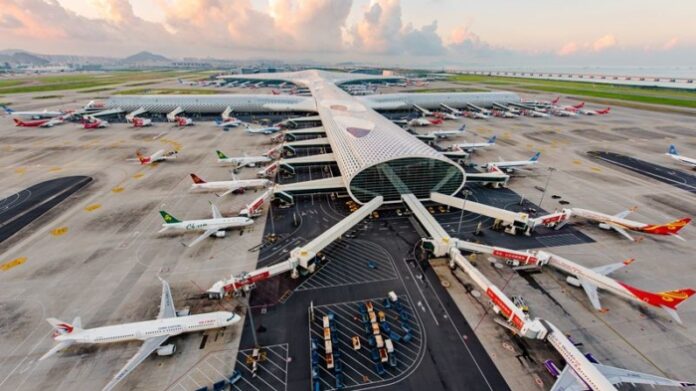
-
IATA says Asia-Pacific countries should be ready for post-COVID surge in air passenger traffic and provide policy support for the airline industry’s zero carbon emission efforts
-
The airline grouping says governments in the region governments have a key role to play in accelerating the recovery and supporting the industry’s sustainable growth
-
IATA senior vice president Conrad Clifford tells Bangkok industry conference regional recovery will be held back as long as China remains closed to international travel
The International Air Transport Association (IATA) has spelled out Asia Pacific’s post-COVID priorities, urging governments to prepare for an expected surge in air passenger traffic and provide policy support for the airline industry’s decarbonization efforts.
Conrad Clifford, IATA’s senior vice president and deputy director general, said that after three years, the region is emerging from the impact of COVID-19 pandemic, which also hit hard Asian airlines, causing about a third of the industry’s losses between 2020 and this year.
“With the region finally emerging from COVID-19, governments have a key role to play in accelerating the recovery and supporting the industry’s sustainable growth,” Clifford said.
He spoke at the Association of Asia Pacific Airlines’ Assembly of Presidents in Bangkok on November 11.
Emerging from COVID-19
The IATA official said while the rest of the world started lifting restrictions and reopening borders last year, it was only around April this year that countries in the region followed suit.
As a result, international passenger demand in Asia in September was only 41.5% of 2019 levels, the lowest among regions, while North America led the way at 89% and other regions were in the 73-83% range, he said. He urged Asia-Pacific governments to accelerate the recovery.
“The delays and congestion experienced in Europe and North America should be a stark reminder for airports and government agencies in Asia-Pacific. Now is the time to get the capacity in place, both in terms of infrastructure and the manpower.”
IATA also calling for more digitalization of processes so airports can handle the traffic surge.
Clifford said he recognized Asia-Pacific post-COVID recovery will be held back as long as China remains closed to international travel. “We must learn to live, travel and work with COVID-19. We hope the Chinese government will have the confidence to re-open its borders soon and connect with the world,” he said.
Policy Support for Decarbonization
In 2021, IATA members committed to achieve net zero CO2 emissions by 2050. Last month, governments meeting at the International Civil Aviation Organization (ICAO) Assembly adopted a Long-Term Aspirational Goal (LTAG) to achieve net zero carbon emissions by 2050.
Clifford welcomed the LTAG adoption, but he said to achieve net zero CO2 emission by 2050, government policy support in key areas of decarbonization is critical. One such area is incentivizing the production of sustainable aviation fuels (SAF), he said.
SAF is expected to account for 65% of carbon mitigation in 2050, the largest contributor to the industry’s sustainability, but hobbled by the limited supply and high costs. Airlines bought every drop of SAF available in 2021 and have committed to over US$17 billion of forward purchases.
With government incentives, 30 billion liters of production capacity globally could be achieved by 2030. Japan and Singapore have shown an exemplary approach to SAF, actively involving the airline industry in consultations and in promoting domestic SAF production.
Clifford also highlighted the need to address air traffic congestion on routes between Asia and Europe, which has been increasing due to airlines reinstating their networks, and diversions to avoid the airspace over Afghanistan, Russia and Ukraine.




